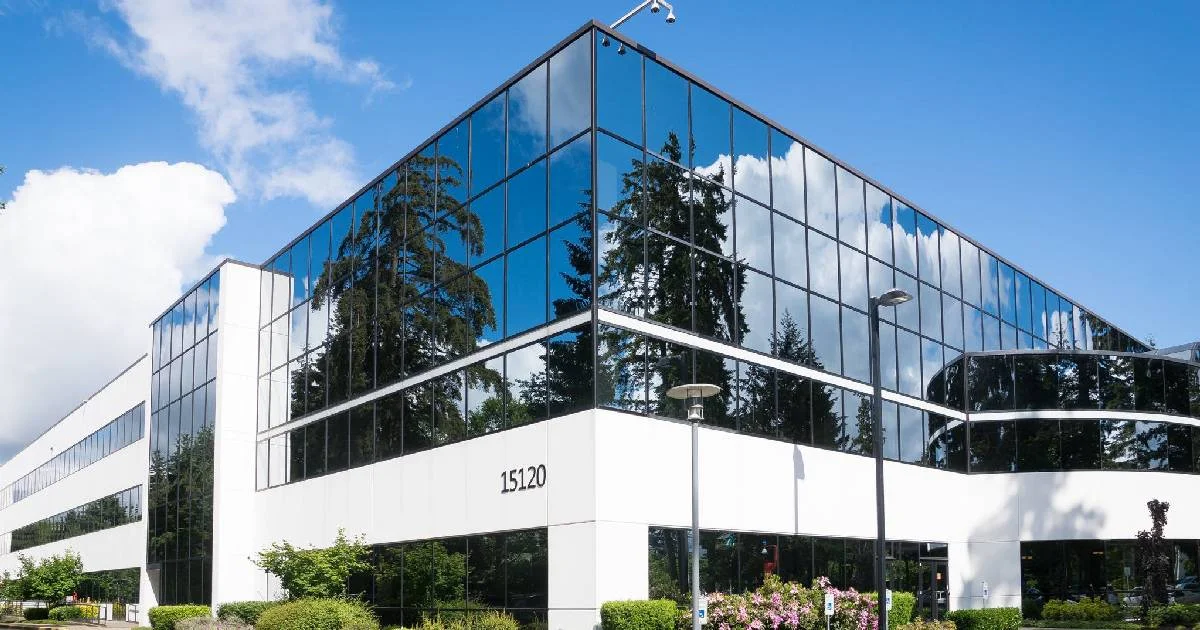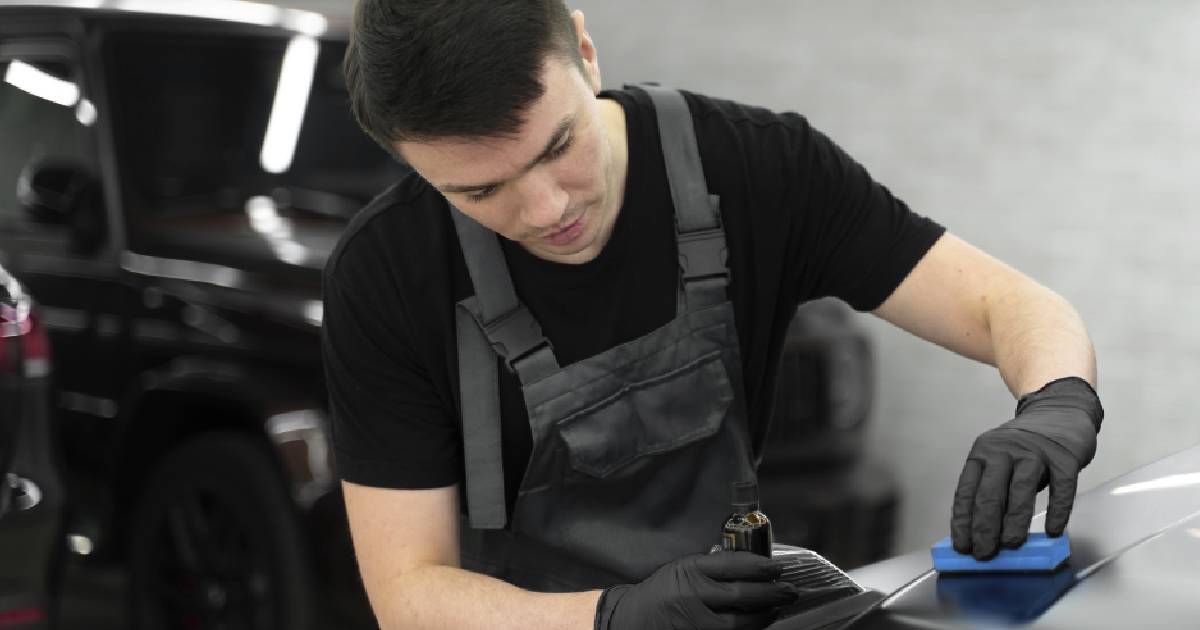
Why Tint Your Office Windows In Rotorua ?
12 Feb 2024, By AdminIntroduction
The design and functionality of office spaces play a crucial role in fostering a productive and comfortable work environment. In recent years, businesses have been exploring various strategies to optimize their office spaces, and one such innovative solution gaining popularity is office window tinting. While often associated with cars, window tinting has proven to be a valuable investment for commercial spaces as well. In this blog post, we'll delve into the reasons why more businesses are opting for office window tinting to enhance their workspaces.
- Energy Efficiency: One of the primary reasons companies choose office window tinting is its ability to improve energy efficiency. Tinted windows act as a barrier against the sun's heat, reducing the need for excessive air conditioning during hot summer months. This not only leads to lower energy bills but also contributes to a more sustainable and environmentally friendly workspace.
- Glare Reduction: Glare from the sun or reflective surfaces can be a major distraction for employees working on computers or engaging in tasks that require concentration. Office window tinting helps minimize glare, creating a more comfortable and visually conducive environment for work. Employees can focus better on their tasks without the discomfort caused by excessive brightness.
- UV Protection: Prolonged exposure to ultraviolet (UV) rays can be harmful to both employees and office furnishings. Office window tinting provides an effective shield against UV rays, reducing the risk of skin damage and preventing the fading of furniture, carpets, and other interior elements. This not only enhances the longevity of office assets but also contributes to the well-being of the workforce.
- Privacy Enhancement: Privacy is a critical consideration in office design. Tinted windows offer a level of privacy by obstructing the view from the outside without compromising natural light. This is especially beneficial for offices located in high-traffic areas or buildings with close proximity to other businesses. Employees can enjoy an open and bright workspace without sacrificing confidentiality.
- Aesthetic Appeal: Window tinting is available in various shades and styles, allowing businesses to customize the appearance of their office spaces. The sleek and modern look of tinted windows can contribute to the overall aesthetic appeal of the workplace, creating a professional and polished image for clients and visitors.
- Employee Comfort and Productivity: Comfortable employees are generally more productive. By regulating temperature, reducing glare, and providing a visually pleasing environment, office window tinting contributes to the overall comfort of the workspace. This, in turn, can positively impact employee morale and productivity.
How does office window tinting contribute to energy efficiency?
By blocking a portion of the sun's rays, office window tinting helps maintain a more consistent indoor temperature. This reduces the need for excessive use of heating and cooling systems, resulting in lower energy consumption and cost savings for the business.
Is office window tinting suitable for all types of windows?
Yes, office window tinting can be applied to various types of windows, including single-pane and double-pane glass. It is essential to choose the appropriate tinting film based on the specific needs and characteristics of the windows.
Can window tinting impact the view from inside the office?
Quality window tinting is designed to maintain the clarity of the view from inside the office while reducing glare and blocking harmful UV rays. Businesses can choose from a variety of tinting options, including those with minimal impact on visible light transmission.
How does office window tinting contribute to energy efficiency?
A: By blocking a portion of the sun's rays, office window tinting helps maintain a more consistent indoor temperature. This reduces the need for excessive use of heating and cooling systems, resulting in lower energy consumption and cost savings for the business.
Conclusion
Investing in office window tinting is a strategic decision that goes beyond simple aesthetics. It addresses key factors such as glare reduction, temperature regulation, UV protection, privacy, and energy efficiency. By creating a more comfortable and productive work environment, businesses can enhance the well-being of their employees and contribute to long-term cost savings. As the trend towards optimizing office spaces continues, office window tinting emerges as a practical and multifaceted solution for modern workplaces.

Can I Tint My Car's Windscreen in New Zealand?
12 Feb 2024, By AdminCar windscreen tinting in New Zealand is subject to specific regulations to ensure safety and compliance with the law. According to New Zealand's Land Transport Rule, tinting on the front windscreen is generally restricted. A clear strip at the top of the windscreen, often referred to as a Sun strip, is permissible but must not exceed 100mm in width. This strip helps reduce glare from the sun while driving. For the rest of the windscreen, a minimum of 70% Visible Light Transmission (VLT) is required, meaning the tint must allow at least 70% of light to pass through. These regulations are in place to ensure drivers maintain clear visibility for safe driving conditions. Before proceeding with car windscreen tinting, it is crucial to consult with professional tinting services to ensure your vehicle adheres to these legal requirements.
Understanding Car Windscreen Tint Regulations
In New Zealand, the Land Transport Rule: Vehicle Equipment and Inspection (2004) sets out clear guidelines regarding the tinting of car windows, including the windscreen. According to these regulations, there are strict rules about how much tinting is allowed on the windscreen to ensure driver visibility and road safety.
Key Regulations for Windscreen Tinting:
- Visibility Requirements: The most crucial regulation is that the windscreen must allow a certain level of light transmission. The rule generally states that the windscreen must allow at least 70% of light to pass through. This ensures that drivers have an unobstructed view of the road and surroundings.
- Tinted Bands: While full tinting of the windscreen is not permitted, you can apply a tinted band to the top of the windscreen. This band, also known as a Sun strip, helps to reduce glare from the sun without compromising visibility. The band must be positioned above the line of sight and should not exceed a certain percentage of the windscreen’s total area.
- Quality of Tint Film: Any tint film used on the windscreen must comply with New Zealand standards and should not interfere with the vehicle's safety features, such as airbags or sensors. It's important to choose a high-quality tint film that meets these standards to avoid any legal issues.
Why Consider Tinting Your Windscreen?
While the full tinting of the windscreen is restricted, a tinted sunstrip can offer several benefits:
- Reduced Glare: A tinted sun strip can significantly reduce glare from the sun, improving driving comfort and safety during sunny conditions.
- Heat Reduction: Tinted bands can help reduce the amount of heat that enters your vehicle, making it more comfortable during hot days.
- UV Protection: Tinted films can block harmful UV rays, protecting the interior of your car from fading and damage.
Choosing a Professional Tinting Service
If you’re considering adding a tinted band to your windscreen, it’s best to consult with a professional tinting service. They will ensure that the tint complies with New Zealand regulations and is applied correctly. Professional tinting services can also offer advice on the best type of tint film to use and can help you choose a solution that meets your needs while adhering to legal requirements.
Conclusion
In summary, while full tinting of your car's windscreen is not allowed in New Zealand, you can apply a tinted band to the top of the windscreen to reduce glare and enhance comfort. It’s essential to adhere to the regulations regarding light transmission and the quality of tint film to ensure safety and compliance. If you’re considering this enhancement, consult with a professional to get the best results and avoid any legal issues. By understanding and following these guidelines, you can enjoy the benefits of car windscreen tinting while staying within the legal limits.
.webp)
Top 5 Benefits of Having Your Car Windows Tinted
12 Feb 2024, By AdminIntroduction
Car window tinting has become a popular trend among car enthusiasts, and for good reason. Beyond the stylish appearance it lends to your vehicle, car window tinting offers a plethora of benefits that go beyond aesthetics. In this blog, we will delve into the top 5 advantages of having your car windows tinted, shedding light on the many reasons why this automotive enhancement has gained widespread popularity.
UV Ray Protection
One of the primary advantages of car window tinting is its ability to block harmful ultraviolet (UV) rays from the sun. Prolonged exposure to UV rays can lead to various health issues, including skin cancer. Tinted windows act as a barrier, reducing UV radiation and protecting both the driver and passengers from potential sun damage.
Heat Reduction
On a scorching hot day, the temperature inside your car can skyrocket. Window tinting acts as a barrier against the sun's heat, reducing the interior temperature and making your driving experience more pleasant. By minimizing heat buildup, you can rely less on your air conditioning, leading to improved fuel efficiency and reduced strain on your vehicle's cooling system.
Enhanced Privacy and Security
Privacy is a key concern for many car owners, and window tinting provides an effective solution. Darkened windows make it harder for prying eyes to see into your vehicle, protecting your belongings and ensuring a greater sense of security. This added privacy can be particularly beneficial when parked in public places, reducing the risk of theft and break-ins.
- Glare Reduction:
Driving in bright sunlight can be challenging, with glare from the sun often causing discomfort and safety hazards. Car window tinting significantly reduces glare, providing a clearer and safer view of the road ahead. This is especially valuable during sunrise and sunset, as well as in adverse weather conditions. By minimizing glare, window tinting contributes to improved visibility and overall driving safety.
- Aesthetic Appeal:
While the functional benefits of car window tinting are numerous, there's no denying the aesthetic appeal it brings to a vehicle. Tinted windows give your car a sleek, sophisticated look that sets it apart from others on the road. The variety of tint shades available allows you to customize the appearance of your car, adding a touch of personal style.
What is car window tinting, and how does it work?
Car window tinting involves applying a thin film to the windows of a vehicle to reduce the amount of visible light, infrared radiation, and ultraviolet (UV) rays that enter the car. This film is typically made of polyester and may contain various layers to achieve specific effects. The tinting process helps regulate the amount of light and heat that enters the vehicle, providing several benefits.
Are there any regulations or restrictions regarding car window tinting?
Yes, regulations regarding car window tinting vary by location. It's essential to check and comply with local laws to avoid legal consequences. Typically, regulations address factors such as the level of tint darkness allowed, the percentage of light that must pass through the tint, and whether certain windows can be tinted. Always research and adhere to your region's specific guidelines for car window tinting.
Can I tint my car windows myself, or should I seek professional help?
While some car enthusiasts may attempt to tint their windows at home, it is generally recommended to seek professional help. Professional installers have the expertise, experience, and tools to ensure a proper and even application. DIY attempts may result in air bubbles, uneven tinting, and an overall subpar finish. Additionally, professional installations often come with warranties, providing peace of mind and recourse if any issues arise.
How long does car window tinting typically last?
The lifespan of car window tinting can vary based on factors such as the quality of the tint film, climate, and how well it is maintained. High-quality tint films, when professionally installed, can last anywhere from 5 to 10 years or more. Regular maintenance, such as gentle cleaning with recommended solutions and avoiding abrasive materials, can contribute to the longevity of the tint. If you notice any signs of peeling or discoloration, it's advisable to consult a professional for repairs or replacement.
Conclusion
Car window tinting is more than just a cosmetic enhancement – it's a practical investment that offers a range of benefits, from protecting your health and preserving your vehicle's interior to enhancing privacy and elevating the overall driving experience. If you haven't considered window tinting for your car yet, these top 5 advantages might just convince you to explore this valuable automotive upgrade.

Before You Spend Money on Ceramic Coatings, Here Are Some Things to Know
12 Feb 2024, By AdminWhen it comes to keeping your car looking brand new, one term that frequently pops up is ceramic coating. This innovative product has gained popularity among car enthusiasts for its ability to protect and enhance the appearance of your vehicle. But before you dive into the world of ceramic coatings, it's important to understand what you're investing in. Here's a comprehensive guide to help you make an informed decision.
What is Ceramic Coating?
Ceramic coating is a liquid polymer that is applied to the exterior of a vehicle. When cured, it chemically bonds with the factory paint, creating a layer of protection. This coating is often made from silicon dioxide (SiO2) and sometimes incorporates other compounds like titanium dioxide (TiO2) to enhance its protective properties.
The Benefits of Ceramic Coating
- Enhanced Protection: One of the primary reasons car owners opt for ceramic coating is its ability to protect the car’s paint from external contaminants. This includes protection against UV rays, bird droppings, tree sap, acid rain, and even minor scratches.
- Hydrophobic Properties: Ceramic coatings provide a hydrophobic layer, meaning water and other liquids bead off the surface easily. This makes cleaning your car much easier and can prevent water spots and staining.
- Glossy Finish: A high-quality ceramic coating will give your car a deep, glossy shine that can make it look better than new. This glossy finish is often one of the most attractive features for car enthusiasts.
- Durability: Unlike traditional waxes or sealants that may last only a few months, a properly applied ceramic coating can last for years. This longevity means less frequent reapplication and more consistent protection over time.
Things to Consider Before Getting a Ceramic Coating
- Cost: High-quality ceramic coatings can be expensive. The cost varies based on the brand, the condition of your car’s paint, and whether you opt for a professional application or a DIY kit. Professional applications can range from a few hundred to several thousand dollars.
- Preparation: Applying a ceramic coating is not a simple process. The car’s paint needs to be thoroughly cleaned and decontaminated, and in many cases, paint correction is necessary to remove any imperfections. This prep work can be time-consuming and requires skill.
- Maintenance: While ceramic coatings reduce the need for frequent waxing, they still require maintenance. You’ll need to wash your car regularly using the right products to maintain the coating’s effectiveness and appearance.
- Realistic Expectations: Ceramic coatings are not bulletproof. They can protect against minor scratches and contaminants but won’t make your car invincible. Large impacts, deep scratches, and harsh chemicals can still damage your vehicle's paint.
- Choosing the Right Product: The market is flooded with ceramic coating products, and not all are created equal. Research and read reviews to find a reputable brand. Some well-known brands include CarPro Cquartz, Gtechniq, and Chemical Guys.
DIY vs. Professional Application
- DIY Kits: There are many DIY ceramic coating kits available that can be applied at home. These kits are usually less expensive than professional applications but may not offer the same level of protection or longevity. Additionally, the application process can be tricky and requires careful attention to detail.
- Professional Application: Opting for a professional application ensures that the coating is applied correctly and evenly. Professionals have access to high-grade products and the necessary tools to prepare your car’s paint properly. While this option is more expensive, it often results in better, longer-lasting protection.
Final Thoughts
Ceramic coating can be a great investment for those looking to protect their vehicle and maintain its showroom shine. However, it’s crucial to weigh the costs, understand the application process, and have realistic expectations about what the coating can and cannot do. Whether you choose a DIY kit or go for a professional application, proper maintenance is key to getting the most out of your ceramic coating. Do your research, and your car will thank you for it.
Investing in a ceramic coating can save you time and money in the long run while keeping your car looking its best. Happy driving!
